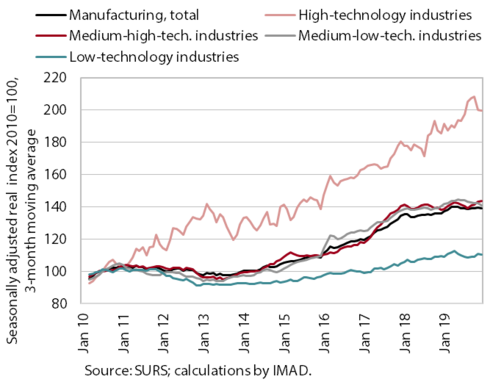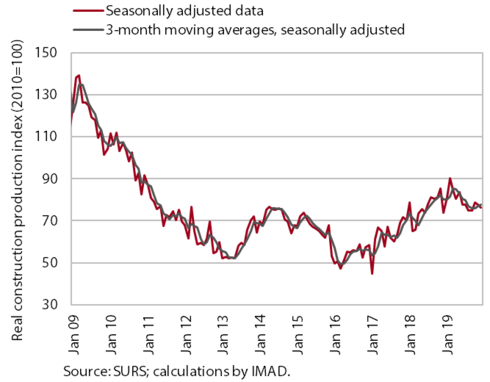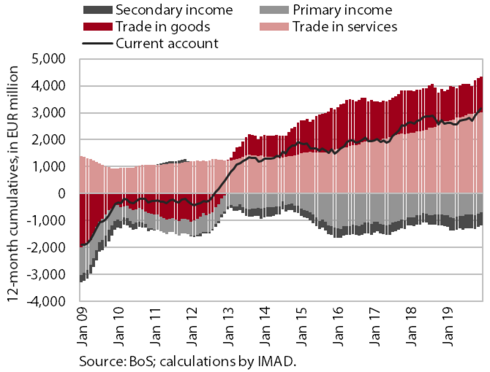Charts of the Week
Current economic trends from 10 to 14 February 2020: production volume in manufacturing, construction, current account of the balance of payments
Growth in manufacturing production was low last year amid weak growth in foreign demand. Modest growth was also recorded for construction activity, despite a slight strengthening in the construction of buildings at the end of last year. The current account surplus widened further last year.
Production volume in manufacturing, December 2019

After growth in the first quarter, manufacturing production remained practically unchanged until the end of last year. Production in high-technology industries, the main contributors to year-on-year growth in manufacturing production in 2019, declined in the last quarter after strengthening in the first three. Production volumes in ICT equipment manufacturing and in the pharmaceutical industry were around one tenth higher year on year on average in the year as a whole. Production in other industry groups according to technology intensity remained similar to that early in the year throughout 2019. It was around 2.5% higher year on year on average. Modest growth was mainly a consequence of weak growth in industrial production in trading partners, which affected particularly industries that produce intermediate goods.
Construction, December 2019

After falling in the middle of 2019, activity in construction rose again in the last quarter but remained down year on year. In the construction of residential and non-residential buildings, activity strengthened and exceeded the previous year’s level, while in the construction of civil-engineering works, it moderated towards the end of the year and was also lower year on year.
The number of new contracts and the stock of contracts dropped in the first half of 2019. In the second half of the year the stock of contracts increased, while the number of new contracts declined further amid significant fluctuations.
Current account of the balance of payments, December 2019

The current account surplus, recorded in Slovenia since 2012, totalled EUR 3.2 billion last year (6.5% of GDP) and was the highest thus far. Its gradual widening, amid rising foreign demand, was influenced particularly by increased surpluses in trade in goods and services, transport services in particular. The high surplus in current transactions, which is a consequence of significant saving amid the still relatively low level of domestic investment, is reflected in an increase in foreign assets and a decline in foreign liabilities. Slovenia’s international net investment position has thus been improving gradually since 2013.
